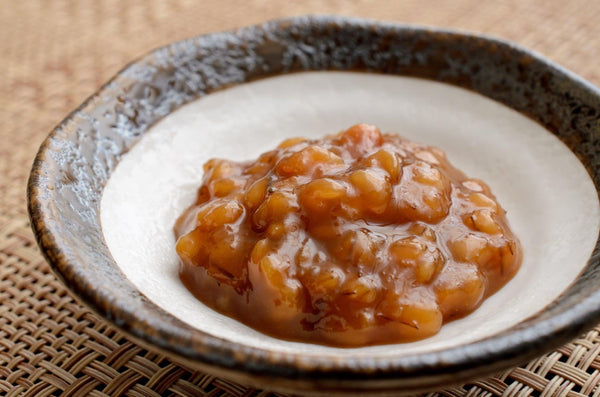
Jump to:
If you’ve tried Japanese foods such as soy sauce, miso, or even sake, chances are you’ve had foods that have undergone moromi. Moromi is an essential process achieved for making many Japanese fermented foods, and it is what gives them their rich aroma and flavor. This article will cover the characteristics of moromi, how to make it, the different types, and how to use it in Japanese cooking.
What Is Moromi?
Moromi is not actually a food itself but is more of a term used to describe the state of fermentation that a food reaches. Moromi happens when raw materials turn into soft solids during the fermentation of soy sauce, miso, sake, etc. The point at which these foods reach moromi means that the ingredients have broken down and reached a thicker consistency.
How Is Moromi Made?

The way in which moromi is achieved will depend on the food. In the case of making soy sauce, wheat, soybeans, koji (a fermenting agent), and saltwater are needed. Once these ingredients are combined, they are left together to ferment. The fermentation process naturally breaks down the enzymes in the ingredients and they become softer. This is the exact point at which they reach the moromi state.
In order for foods to reach moromi, the inclusion of some type of fermentation agent is critical. In most if not all cases, koji is the go-to choice.
Once the ingredients have reached moromi, they are then squeezed together and the residual liquid is what is eventually turned into soy sauce. Depending on the food, the method in which the moromi is made, as well as its texture and how it is used, will vary.
Seasonings Made With Moromi
Japanese essential condiments such as soy sauce, sake, mirin, shochu, rice vinegar, and miso have all undergone moromi in order to reach their final state. Any fermented type of Japanese condiment has undergone moromi.
How To Use Moromi

Since the leftover raw materials from moromi are not included in the final products of soy sauce, miso, or sake, they can oftentimes be packaged separately and sold for consumption. In Japan, you can find various forms of moromi being sold in supermarkets.
Soy sauce moromi, often called “shoyu no mi” is a regional ingredient enjoyed in some parts of Japan including Yamagata and Nagano prefectures. You can find it in supermarkets throughout Japan, or even order it online. It has a richer aroma and taste compared with soy sauce, but it can be used to season dishes in the same way. Try adding soy sauce moromi to your stir-fried dishes, or spoon it over some tofu to take your dishes to the next level!
Miso moromi, on the other hand, is a bit sweeter than soy sauce moromi. It can be used as an ingredient for onigiri rice balls, or as a seasoning when you want to achieve the sweet and savory flavor of miso. It can also be enjoyed on its own as a dipping sauce for fresh veggies like cucumbers.
Sake moromi differs greatly from soy sauce and miso moromi because it only contains rice. Sake moromi is also called “doburoku” and it has a thick texture and milkier, white color compared to sake. It can be drunk on its own and is said to have a more prominent sweet flavor than sake. Since it is basically the unfiltered version of sake, it is higher in nutritional value too.
Interested in trying moromi out for yourself? If so, be sure to check out this product. If you hadn’t heard of it before, would you like to try it out for yourself? Let us know in the comments.


0 comments